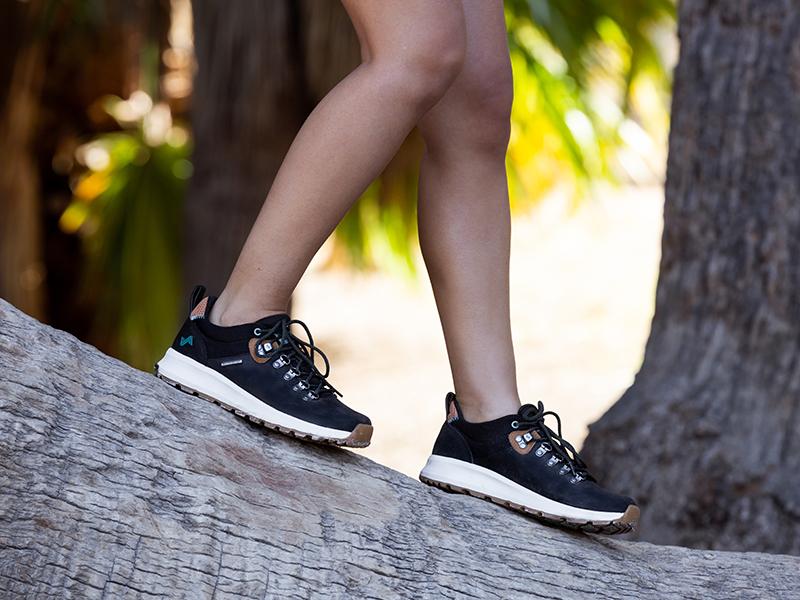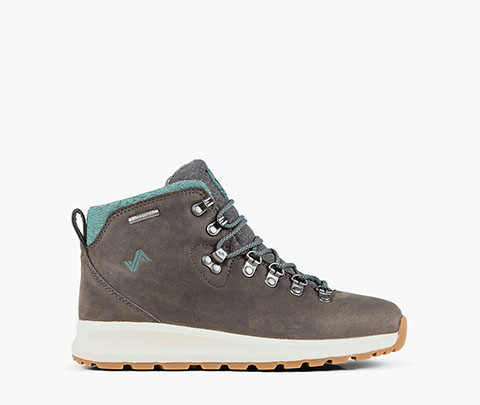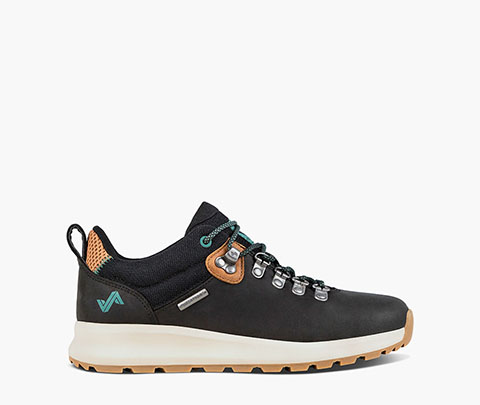
Men's and women's hiking shoes come in lots of styles and with a variety of features, which can make choosing a pair challenging. One common debate is whether you should buy mid- to high-top hiking boots, or low-top hiking sneakers.
Spoiler alert: The answer mostly comes down to personal preference and how you’ll be exploring the great outside. You should consider the weather, the types of terrain you’ll be tackling, and how much weight, if any, you’ll be carrying. Read on for some insights from our team to help you decide which type of hiking shoe is right for your adventures.
Yes, Low-Top Hikers Provide Ankle Support
First things first, let’s talk about ankle support. It’s a common misconception that high- and mid-tops are the only options for good ankle support. Yes, mid-top hiking boots offer more ankle support than low-tops, but other features, including the shank and midsole, also play an important role.
You might be wondering, what’s a shank? This piece of material sits between the insole and the outsole and provides structure and stability for your foot, and the ankle too. In hiking shoes, the shank is typically nylon, which, as a thermoplastic, is supportive but not too rigid.
Additional support can come from the midsole. If it’s wider and curls up along the sides of the shoe, your foot will be more secure. Most hiking shoes, regardless of their height, include this feature.
Moral of the story: Both low-profile hiking sneakers and taller boots provide stability for traversing uneven terrain.
However, one pro for low-tops is that they allow for more mobility in and around the ankle, and they reduce the possibility of uncomfortable rubbing or bruising due to a stiff collar. For some people, this added mobility beats the support and coverage of a high-top boot—especially when hiking light and fast. On the other hand, if you’re planning to carry a heavy pack, the added support and coverage of a traditional high-top boot may be preferable.
Consider The Climate When Buying Hiking Shoes
When choosing hiking shoes, having an idea of where and when you plan to use them is helpful. Are you aiming to adventure in hotter climates or colder areas? We find that many customers like low-tops for warm weather outings, since less coverage generally helps keep feet from overheating.
But if you’re in very damp climates, a mid-top boot with waterproof protection may be best, regardless of the temperature outside. Allow us to explain why.
You can find both low- and mid-tops with an internal waterproof membrane, which is a bootie inside your boot that makes it truly waterproof. But the taller the shoe, the taller that membrane can be and the more waterproof protection you’ll have. What’s this mean for you and your hiking adventures? Practically speaking, you can step in deeper water or mud without worrying about your feet getting wet. And if you’re hiking in snowy conditions, the extra coverage and added warmth of a boot can be useful, too.
The Weight of Your Hiking Shoes Matters, Too
Another reason why some people prefer low-top hiking sneakers to mid- or high-tops is the weight. It turns out that Sir Edmund Hillary’s wisdom that “a pound on your feet equals five pounds on your back" is true. It’s even been validated by several studies over the years.
Our hiking shoes are specifically designed to be lightweight, so there’s not much difference in weight between our low-tops and mid-tops. For example, take our Women’s Thatcher and Thatcher Low WP, which are both fully waterproof with an internal membrane. A pair of mid-top Thatchers weighs in at 30 oz., while the Thatcher Low WP is 28 oz. So if choosing between two Forsake styles, you don’t have to worry too much about weight.
However, heritage- and traditional-style hiking boots are often heftier, so if you’re shopping around in that arena, it’s wise to evaluate the weight difference of mid- and low-top hikers. We investigated several traditional women’s hikers and found that mid- and high-tops can weigh 4 to 8 oz. more than a similar pair of low-tops. Depending on your own personal preferences and hiking experience, that added weight might be negligible, or it may tip the scales in favor of a low-top.

30 oz per pair

28 oz per pair
Weight and measurements of your hiking shoes also matter if you’re traveling with them. You may prefer a sturdily constructed low-top hiking sneaker over a taller boot if you’re worried about the weight of your carry-on or need to save space in a pack.
So, Which Type of Hiking Shoes Should You Buy?
There are no hard and fast rules when it comes to buying hiking shoes. Some thru-hikers swear by sneakers, and some day-hikers love a hefty boot. If you’re planning to hit the trails in all sorts of conditions, you may even want a pair of each.